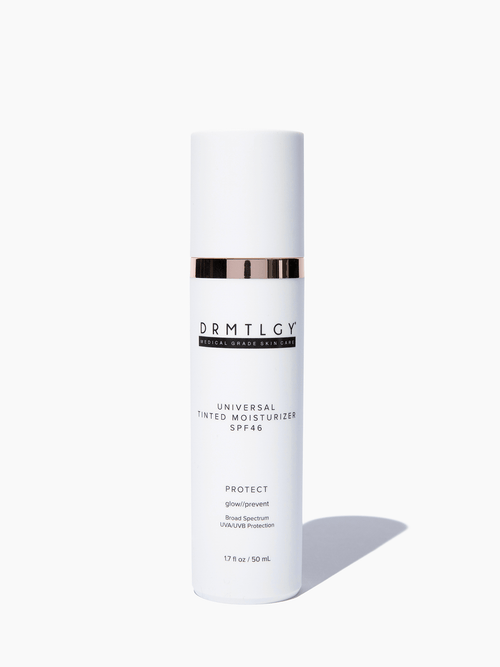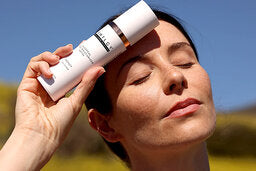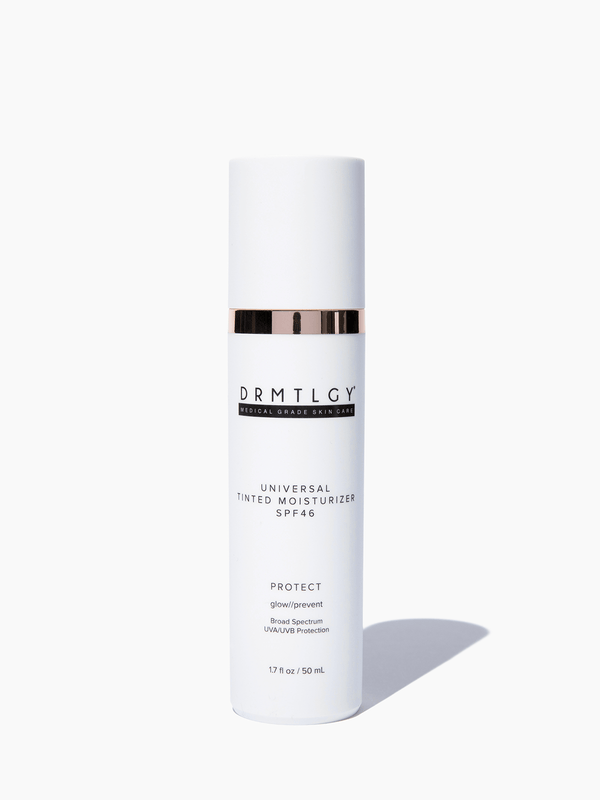We tend to notice almost every little change that happens on our face, since it's one of the first things other people notice about us. But the effects of UV exposure aren't just limited to this area -- sun-related skin issues like sunburn and sunspots can affect the rest of our bodies too.
You might already be very familiar with the discomfort (and sometimes, the pain) of sunburn -- but sunspots may be a different story.
What are they, exactly, and should you be concerned about them? Get the low-down on sunspots, how to treat them, and how to stop new ones from cropping up below.
What are Sunspots?
Sunspots (also known as liver spots, lentigines, or lentigos) are flat, brownish spots that are caused by pigment-producing cells called melanocytes that divide and produce even more pigment when they're exposed to UV light.
Because they're caused by UV radiation, they'll usually show up on areas that get lots of sun exposure -- think your face, neck, chest, back, shoulders, and even the backs of your hands. You might start seeing them in your 40s, but they can also show up earlier or later in life depending on how much unprotected sun exposure you get.
The good news: Sunspots are 100% harmless, and if you do get one, you really don't need to treat it except if you want to do so for aesthetic reasons.
If you fall into this group, though, keep reading for tips on treating existing sunspots and preventing new ones.
4 Tips on Preventing and Treating Sunspots
1. Limit the amount of unprotected sun exposure you get
Because sunspots are a direct result of sun exposure, reducing the amount you get will be your biggest line of defense against them.
Try to limit the time you spend in the sun, especially in the early afternoon when the sun's rays are at their strongest. If you have to step out, stay in the shade as much as possible and cover exposed skin with clothing and hats.
2. Wear a broad-spectrum sunscreen with an SPF 30 or more
Of course, there's no avoiding the sun 100% of the time. So if you do find yourself venturing out during the day, make sure to wear a broad-spectrum sunscreen with an SPF of at least 30.
Apply half a teaspoon's worth of the Broad Spectrum SPF 45 to your face and a shot glass's worth of your favorite body sunscreen at least 15 minutes before you head out, because the ingredients that protect your skin from the sun need a bit of time to activate. Make sure to reapply every two hours if you'll be out in the sun for a while, too.
Wearing the right amount of UV protection on a regular basis will help to protect existing spots and prevent new ones from forming.
(For more tips on how to get the most out of your sunscreen, read this blog post.)
3. Use over-the-counter skincare products to fade sunspots
Sunscreen is mainly a preventative measure in the fight against sunspots, so if you already have them, you'll want to work topical antioxidants like vitamin C and retinol into your skincare routine too.
Use the Vitamin C E & F treatment every morning to help fade existing spots and further protect your skin from UV radiation while you're out and about. Then at night, use the botanical-rich, kojic acid-based serum, the Hydra-Fader, to help naturally brighten the look of age spots and balance skin tone, while peptides, ceramides, and panthenol leave skin hydrated and nourished. Lastly, use the Retinol Complex 0.5% aftwards to continue attacking hyperpigmentation and speed up the cell turnover process.
You should already be wearing sunscreen every day, but if you don't, you'll definitely want to do so when you start a retinol regimen. This ingredient will make your skin more sensitive to the sun and cause even more skin issues -- which sort of defeats the purpose of retinol, don't you think?
Avoid that entirely by wearing sunscreen from the get-go, and your skin will thank you for it.
(Got more questions about retinol? Find our retinol FAQ blog post here.)
4. Work with a dermatologist to create a combination treatment plan
It's surprisingly easy to make a mistake when self-diagnosing yourself with sunspots. So, if you're serious about getting rid of them, it's best to go to a board-certified dermatologist so they can offer their professional opinion on the matter.
Not only will they be able to use their expertise to correctly diagnose your skin spots, they can also offer you stronger treatments to get rid of sunspots quicker and more efficiently than OTC products can alone.
Because sunspots are notoriously stubborn, most derms will create a combination treatment plan for you. These will usually include in-office treatments to attack sunspots at their source, plus topical products to help speed up the process between and after treatments.
Some of the treatments your dermatologist may use include:
Taking the wrong approach can set you back in your sunspot treatment efforts -- and can even make them worse, especially with more drastic measures like the ones mentioned above -- so it's best to let an expert guide you in the direction to take for your skin's specific needs.
Make Sunspots a Thing of the Past with These Skincare Tips
As you can see, there are many routes you can take for your sunspots, depending on how quickly you want them to disappear. Although OTC skincare products won't offer you results as drastic as in-office treatments will, consider them as supplements to your treatment program to get the results you want sooner.
Luckily, sunspots aren't harmful in any way. In fact, you can even think of them as reminders of your favorite days under the sun. Just make sure to slather on a healthy amount of sunscreen the next time you venture outside!
References
Clinics in Dermatology, September-October 2009, Volume 27, Issue 5, pages 469-474
American Journal of Clinical Dermatology, April 2011, Volume 12, Issue 2, pages 87-99
Clinical Interventions in Aging, December 2006, Volume 1, Issue 4, pages 327-348
The American Journal of Pathology, June 2006, Volume 168, Issue 6, pages 1861-1868

















